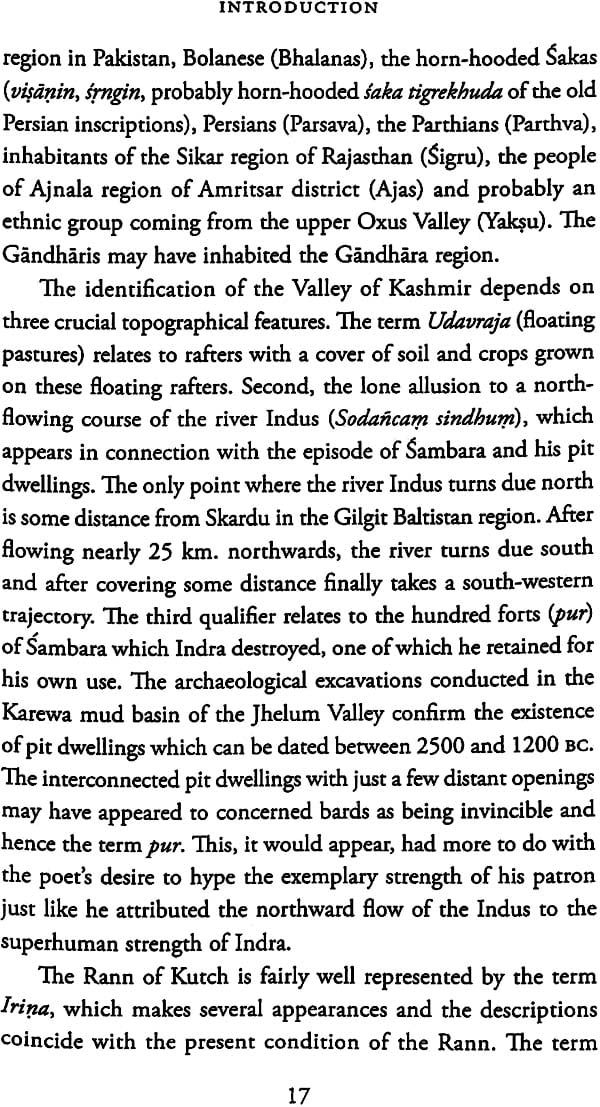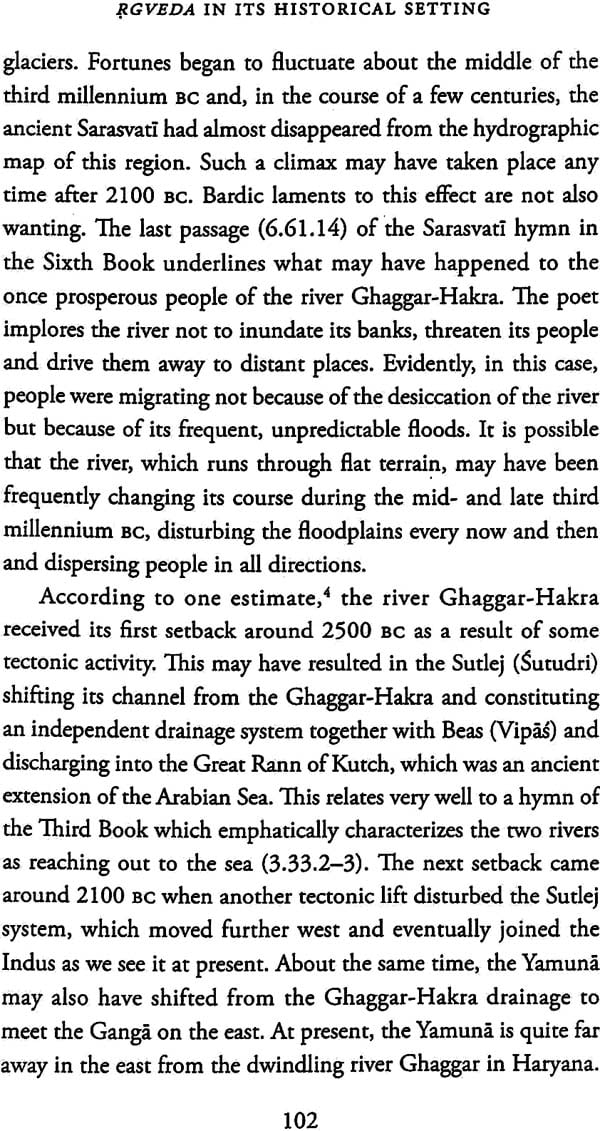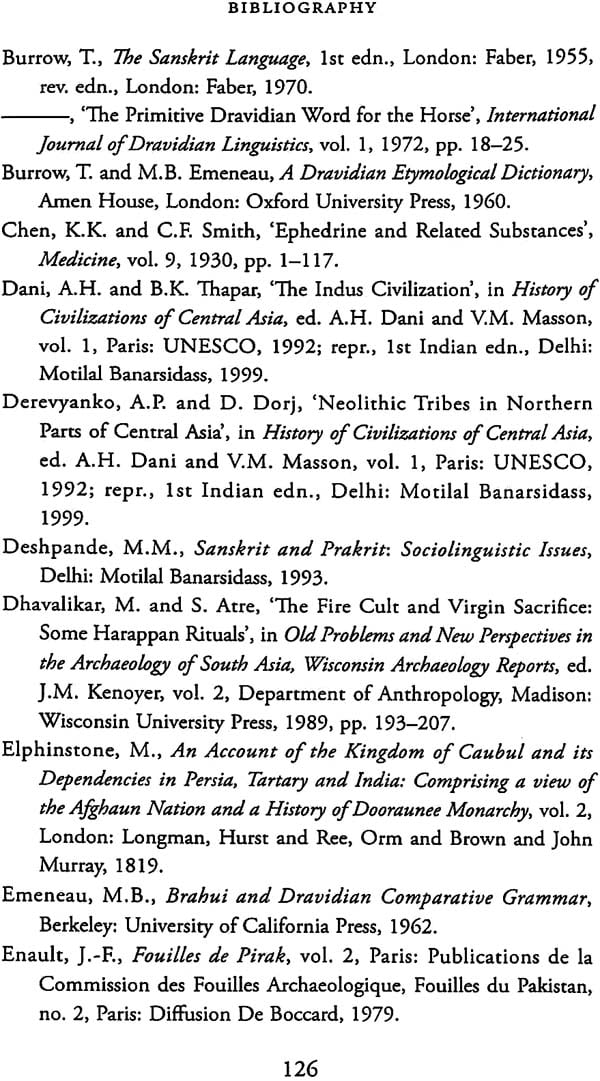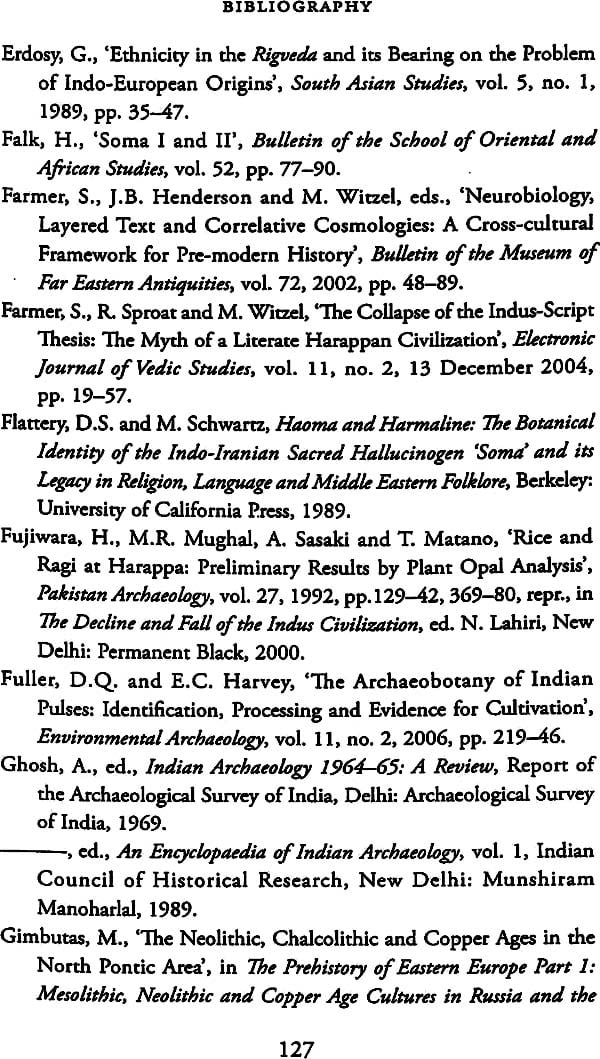
The Rgveda - In its Historical Setting
Book Specification
| Item Code: | NAO752 |
| Author: | Ramesh Nath Nandi |
| Publisher: | Primus Books, Delhi |
| Language: | English |
| Edition: | 2018 |
| ISBN: | 9789384092894 |
| Pages: | 146 |
| Cover: | Hardcover |
| Other Details | 9.5 inch X 6.5 inch |
| Weight | 350 gm |
Book Description
The text-archaeology correlation in respect of the Harappan Civilization shows that the Harappans and the people of the R. gveda were part of the same multi-ethnic, multilingual, multicultural geographical and chronological space; that a prolonged phase of geo-climatic devastations ravaging the Vedic-Harappan subcontinent triggered an ideology of nature worship in which prayers could be recited only in the Vedic dialect which, in-turn, put the Vedic-speaking moral community on a high pedestal. The increasing number of clients hiring Vedic-speaking chantsmen inflated the ranks of the priesthood with attendant Jealousy and infighting Which was further aggravated with the introduction of the Soma oblation.
This book tries to identify the Soma plant on the basis of available literary and archaeological evidence as well as trace a hydrographic history of the river Saraswati between the fourth and the second millennium BC. Ii also examines the sanctification of the river as the greatest goddess (Devitame). The greatest river (Naditame), and the great mother (Ambitame). The final segment of the book explores the archaeo-textual possibilities and limitations of a faunal reconstruction in the Vedic-Harappen subcontinent.
Ramerndra Nath Nandi is former Professor of History, Patna University. His major publications are: An Outline of the Aryan Civilization (2017): Ideology and Environment, Situating the Origin of Vedic Culture (2009); Aryans Revisited (2001); State Formation, Agrarian Growth and Social Change in Feudal South India, AD 600-1200 (2000); Prachin Bharat Me Dharma Ke Samajik Adhar (in Hindi, 1998); Social Roots of Religion in Ancient India (1986); Critical Edition of S.C. Nandimath’s A Handbook of Virasaivism (London, 1942; revd edn 1979); and Religious Institutions and Cults in the Deccan (c. AD 600-1000) (1973).
This Study Followed the award of a senior academic fellowship by the Indian Council of Historical Research (ICHR) during 2005-6. Subsequently, the Council cleared the manuscript for publication and even took the initiative to this effect but could not see it through. The manuscript had to find a berth for itself with a publisher.
The work draws substantially upon a longish engagement with the life and times of old Vedic people, outlined in a monumental bardic literature. Accordingly, it deals with issues not covered elsewhere by the present writer though issues discussed in various places are touched upon here for the sake of perspective.
For text study, I have used the four-volume compendium of the Rgveda edited by F. Max Muller together with the commentary of Sayana. Text citations are in the order of book, hymn and stanza like the Fifth Book, second hymn and third stanza (5.2.3).
During the course of this investigation, I have received valuable support from a host of friends and well- wishers, particularly from the next generation.
| Preface | vii | |
| 1 | Introduction | 1 |
| Agriculture | 4 | |
| Trade and Crafts | 8 | |
| The Political System | 12 | |
| The Liturgy | 14 | |
| The Geographical Limits | 16 | |
| 2 | Timing The Text | 20 |
| Third Millennium BC: The Take-off Time | 21 | |
| From Chants to Fire Rituals | 22 | |
| The Cult of the Solar Disc | 25 | |
| The Urban Context | 26 | |
| The Commercial Context | 29 | |
| The Age of Decay | 33 | |
| Significance of theVistasva-Kaksivan Episode | 36 | |
| The Funerary Horizon | 41 | |
| 3 | Language and Social Change | 49 |
| 4 | Ritual and Power | 58 |
| Genesis of the Word | 60 | |
| Word and the Ideology | 63 | |
| Word as Oblation | 66 | |
| Word and the Corporate | 68 | |
| Word as the Basis of Conflict | 73 | |
| Word and the Subaltern | 76 | |
| 5 | Soma In Archaeology And Literature | 81 |
| Aboriginal Beginnings | 82 | |
| Arcaeological Contexts | 82 | |
| The Plurality of Soma | 85 | |
| Ancient Soma priests | 89 | |
| 6 | Revisiting The Sarasvati | 96 |
| The Western Sarasvati | 103 | |
| 7 | Animals In Art And Literature | 109 |
| Elephat, Tiger and Rhinoceros | 110 | |
| The Lion | 113 | |
| The Horse | 114 | |
| The Horse Riders | 119 | |
| Bibliography | 125 | |
| Index | 133 |











